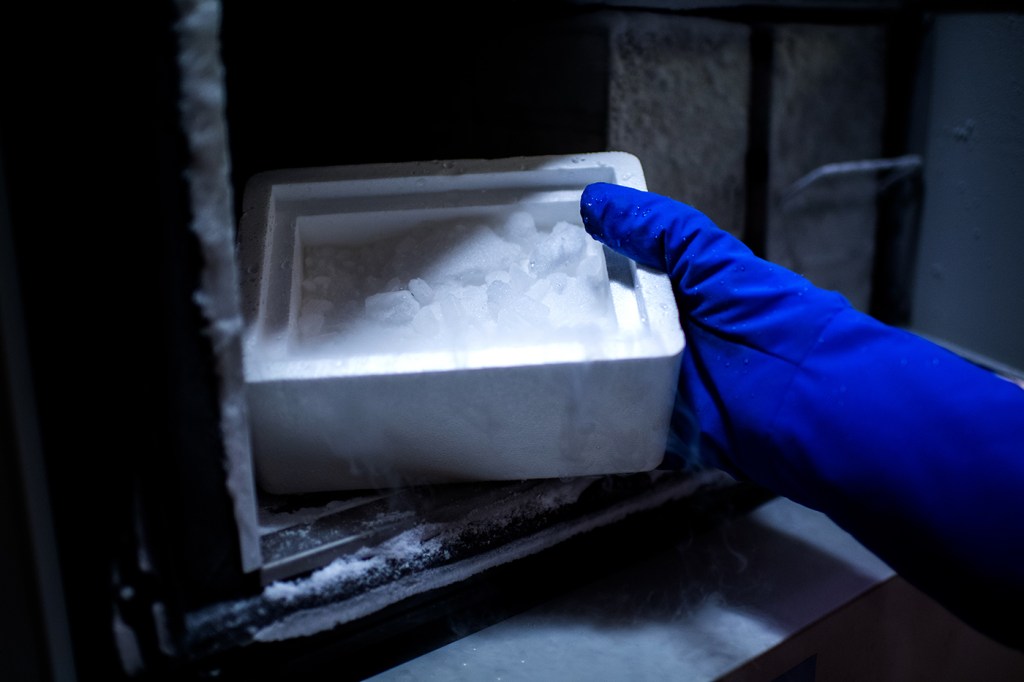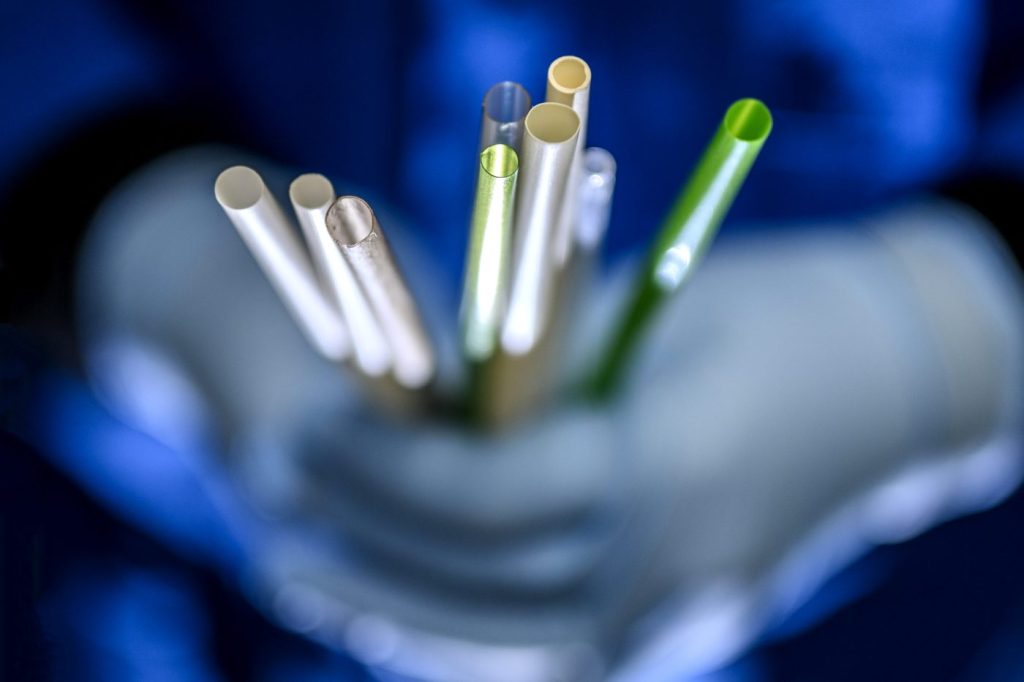Dry ice can do more than make fog. It’s key to keeping the COVID-19 vaccine cold.

As the distribution of COVID-19 vaccines starts rolling out across the United States this week, dry ice has become a hot commodity.
Clocking in at minus 109 degrees Fahrenheit, these super cold blocks of carbon dioxide are necessary for keeping the temperamental vaccines at the right temperature. The Pfizer vaccine, for example, must be stored at minus 94 degrees Fahrenheit.
But can production of dry ice keep up with the recent spike in demand? John Engen, distinguished professor of chemistry and chemical biology at Northeastern, doesn’t see why not.

John Engen, distinguished professor of chemistry and chemical biology, explains how dry ice works as demand for frozen carbon dioxide increases because of COVID-19 vaccine distribution. The vaccines must be preserved in extremely cold temperatures. Northeastern file photo
“This is a relatively small amount of dry ice that’s needed in the grand scheme of how much is used everyday for shipping biological material,” says Engen, who uses dry ice in his lab to move materials to and from freezers.
“Right now the demand is quite a lot more than normal, but I think the capacity to make more dry ice is certainly there,” he continues.
Dry ice is usually made from the carbon dioxide byproduct of industrial processes, such as petroleum refining, ethanol production, and sometimes even alcohol production. Dry ice facilities capture the excess carbon dioxide gas from these factories before it’s released into the atmosphere and convert it into liquid form, Engen explains.
Carbon dioxide doesn’t like to stay in liquid form for long, though. To turn the liquid into ice, the liquid is placed in a depressurized chamber. As the liquid naturally begins to convert to a gaseous state, the expansion of the liquid molecules into the air spurs a rapid decrease in temperature, causing the gas to freeze, Engen says. The result is dry ice.
“It’s a good thing that the carbon dioxide gets captured and recycled from these industrial processing sites,” Engen says. “We can actually do something with the waste.”
Dry ice is convenient for shipping because, as the name suggests, it doesn’t melt, which means no watery cleanup required.
The ice naturally skips the liquid stage when it warms and instead turns into smokey white wisps. You’ve probably seen this milky vapor pouring out of fog machines or Halloween brews.
The smoke-like vapor might be fun for special effects, but it can also be dangerous in large quantities and in enclosed spaces, Engen says. The Federal Aviation Administration recently issued a safety alert for crew members aboard planes carrying large amounts of dry ice.
Solid carbon dioxide evaporates faster at higher altitudes. The rapid vaporization of ice during air travel could cause the plane to change weight over the course of a flight, as well as change the plane’s center of gravity.
Additionally, increased levels of carbon dioxide in the cabin could cause drowsiness or dizziness among the flight crew, and in high concentrations, difficulty breathing and a lack of oxygen.
Dry ice also has the potential to explode if the carbon dioxide gas becomes trapped in an enclosed space. However, shipping and manufacturing companies are aware of this, and never place dry ice in completely sealed containers, Engen says.
Another possible complication with dry ice is acidity. Carbon dioxide, an acidic substance, could affect the pH level of product it’s meant to keep cool, Engen says. But this is almost never a problem since packaging materials usually separate the ice from the product.
Previously, dry ice was used starting in the 1920s to keep food frozen in lieu of freezers, which weren’t invented until the 1940s, Engen says. It was used to make bubbly soda—dry ice cubes can be dropped in drinks to carbonate them, although now sodas and seltzers are infused with liquid carbon dioxide to achieve the bubble effect, he explains.
Dry ice has also been used in fire extinguishers to smother fire-fueling oxygen, although these aren’t as popular as chemical foam extinguishers, which don’t pose a threat of frostbite. Cryogenic gloves (or really thick ski gloves, in a pinch) must be worn when handling dry ice directly, which has the ability to cause freezer burn in a matter of seconds.
The relatively easy-to-make ice is more cost effective than alternative cooling methods for shipping the COVID-19 vaccines, which could include trucks equipped with generators used to power super freezers, Engen says.
“If you need to move labs, for example, and your entire life’s work—cells or DNA samples no one else has—need to be kept in the minus 80 degree Celcius freezers, maybe you would use one of these trucks,” Engen says.
As for the vaccine, which can’t spend weeks crossing the country via ground transportation, dry ice remains the more sustainable and flexible option.
For media inquiries, please contact Shannon Nargi at s.nargi@northeastern.edu.





